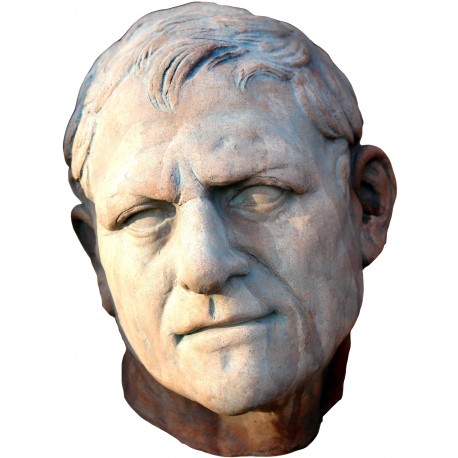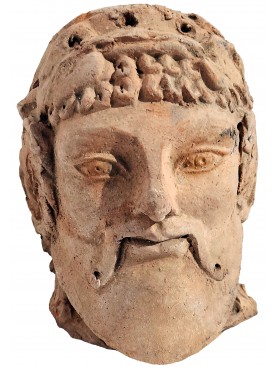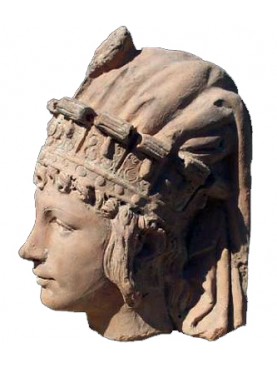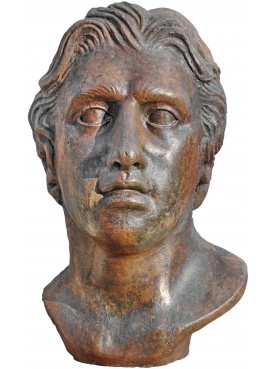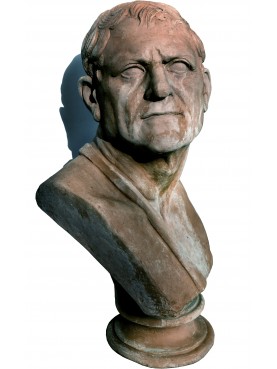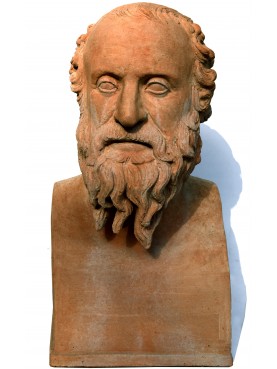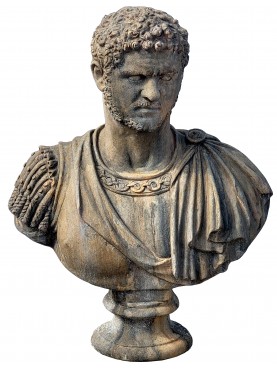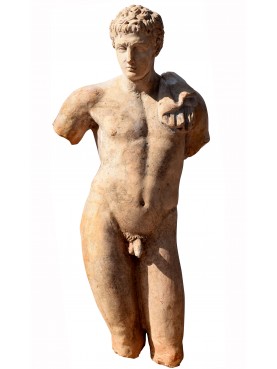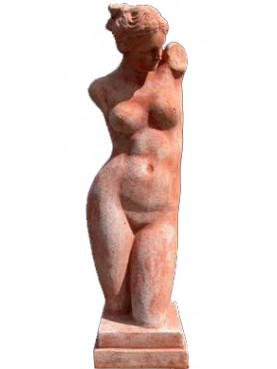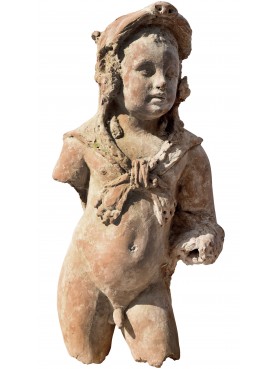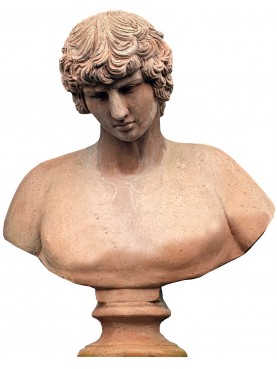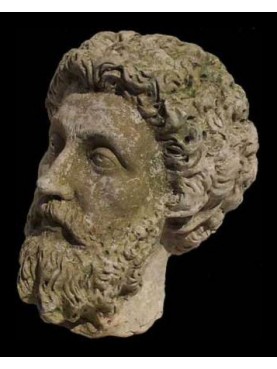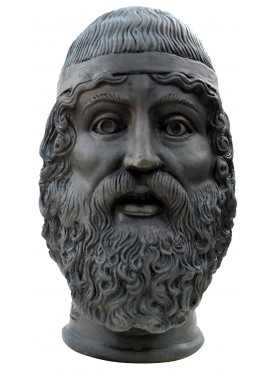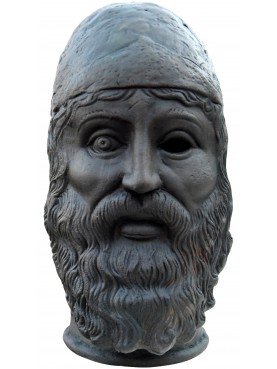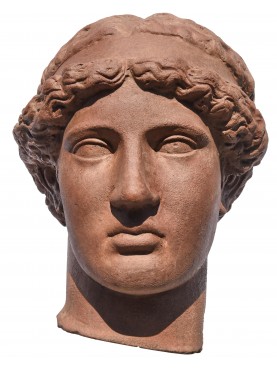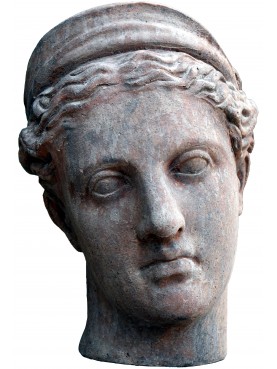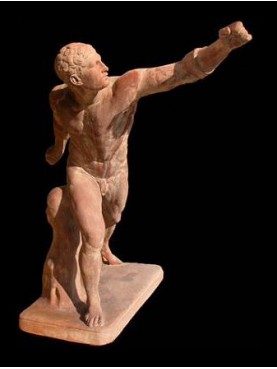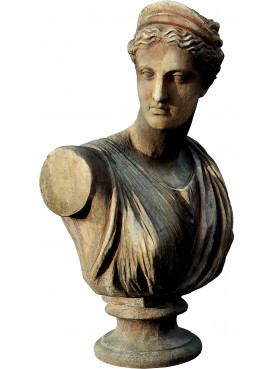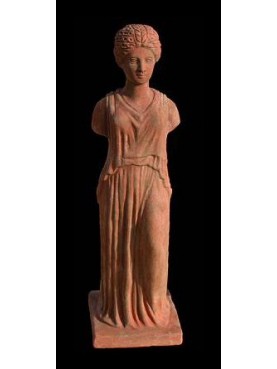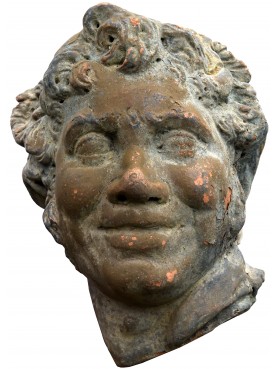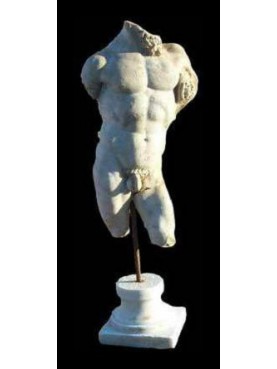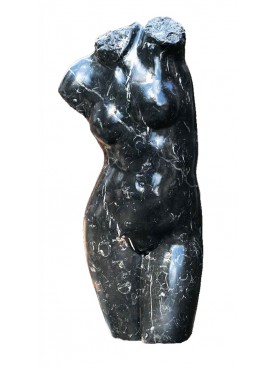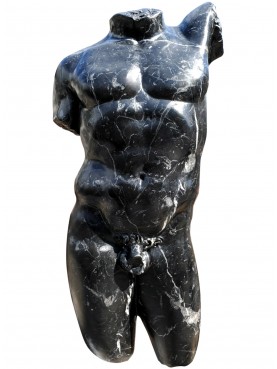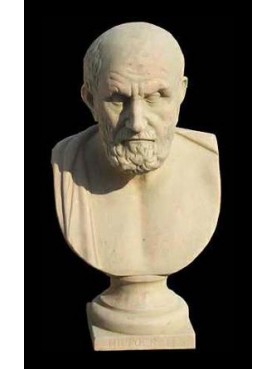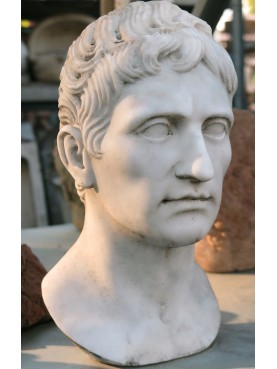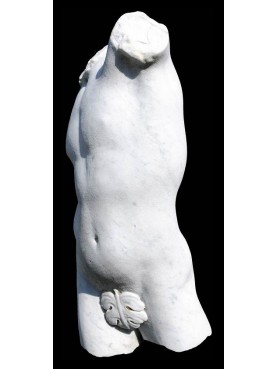Lysimachus terracotta head of the National Museum of Naples
Lysimachus terracotta head of the National Museum of Naples
12242
New
Terracotta head of the famous bust of Lysimachus visible at the wonderful National Archaeological Museum of Naples.
Our reproduction in Terracotta.
Macedonian General following Alexander the Great.
We have also a stone Lysimachus roundel: Lysimachus stone tondo
2 Available
Data sheet
| Height | 28.74 in | 73 cm |
| Width | 15.75 in | 40 cm |
| Depth | 9.84 in | 25 cm |
| Weight | 33.07 lbs | 15 Kg |
| Round base diameter Ø | 8.66 in | 22 cm |
| Manufacturing | Hand made in Italy | |
| Material | Terracotta |
More info
The National Museum of Naples classification:
So-called Lysimachus
Augustan copy (23 BC-AD 14) of an original of the 2nd century BC
Museum inventory number: 6141
Lysimachus (360 BC – 281 BC) was a Macedonian officer and diadochus of Alexander the Great, who became a basileus ("King") in 306 BC, ruling Thrace, Asia Minor and Macedon. One of Lysimachus's great personal friends was known to be Philippides of Kephale .The decree for Philippides makes it evident that he was with the king during the revolution and the king himself often spoke well of Philippides efforts to the Athenian ambassadors.
He also convinced the King to render much service after Ipsos, securing the release of the prisoners whom Lysimachus had taken.
Lysimachus was born in 361 BC (or 355 BC), to a family of Thessalian Greek stock. He was the second son of Agathocles[6] and his wife; there is some indication in the historical sources that this wife was perhaps named Arsinoe, and that Lysimachus' paternal grandfather may have been called Alcimachus. His father was a nobleman of high rank who was an intimate friend of Philip II of Macedon, who shared in Philip II’s councils and became a favourite in the Argead court. Lysimachus and his brothers grew up with the status of Macedonians; all these brothers enjoyed with Lysimachus prominent positions in Alexander’s circle and, like him, were educated at the Macedonian court in Pella.
He was probably appointed Somatophylax during the reign of Philip II.[8] During Alexander's Persian campaigns, in 328 BC he was one of his immediate bodyguards. In 324 BC, in Susa, he was crowned in recognition for his actions in India. After Alexander's death in 323 BC, he was appointed to the government of Thrace as strategos although he faced some difficulties from the Thracian Dynasty Seuthes

